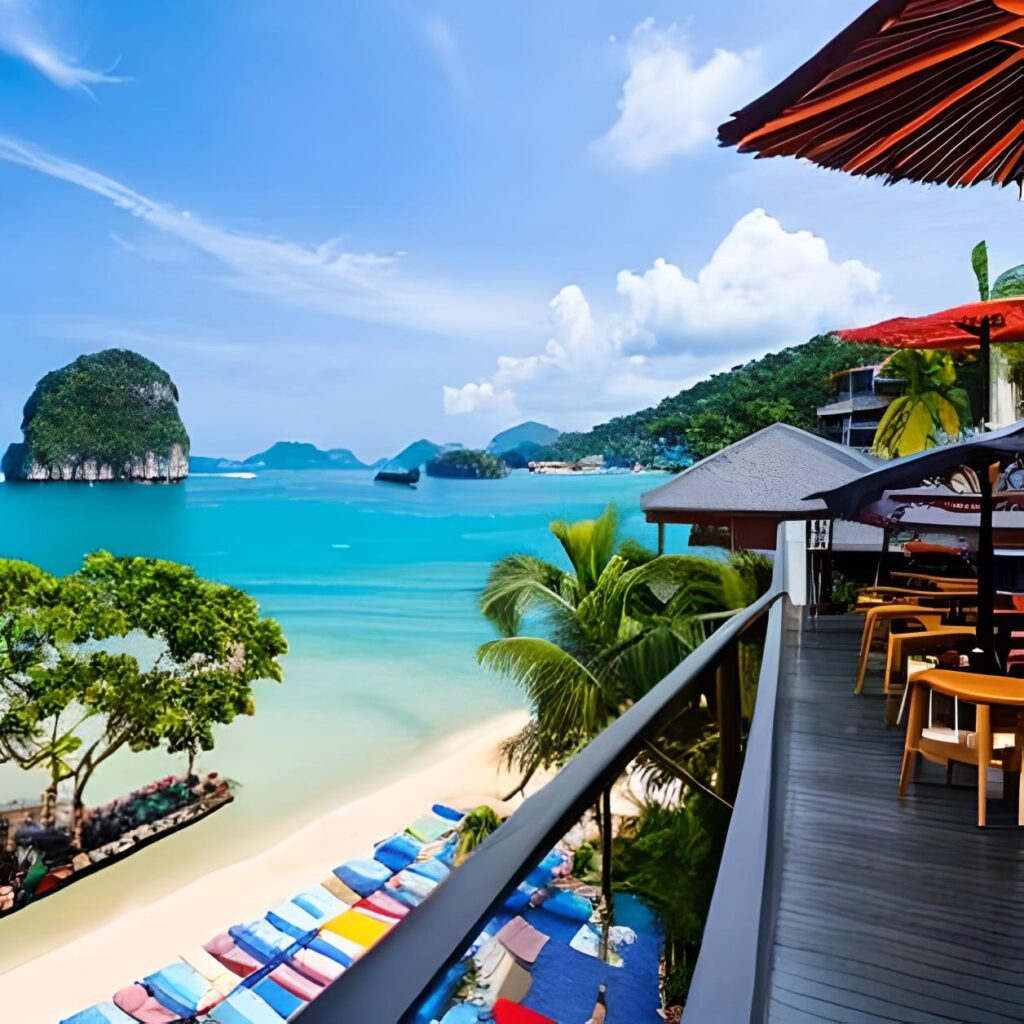Are you considering visiting Phuket’s Patong Beach? You’ve come to the correct site, then! Discover all you need to know about Patong beach, including what to do, where to eat, and where to stay, in this comprehensive travel guide.
With its lengthy stretch of white sand beach flanked by restaurants, cafés, and bars, Patong is the most well-known and popular beach vacation location in Phuket. Patong is well-known for being a party town with a wild nightlife. Numerous beer bars, go-go bars, dance clubs with strippers, massage parlors, nightclubs, and cabaret performances may be found here.
In Patong, it appears that practically anything may be purchased for a reasonable price. Patong has an honesty about it, even though it may not be to everyone’s taste. It makes no effort to conceal its filthy side. You may either join in and party from dark till dawn or completely avoid this side of Patong Beach since everything is out in the open.
The tourism boom in Phuket began in Patong, and it is simple to understand why. The lovely long white sand beach is still very nice. But its biggest issue is also its popularity. Much of the charm that previously drew tourists has been replaced with charter passengers, jetskis, and enormous parasailing balloons.
In the 1960s and 1970s, backpackers first came upon this tranquil community with a beautiful beach, but it wasn’t until a decade later that the government decided to make Patong a popular tourist destination. Patong quickly gained enormous popularity among Europeans, particularly Scandinavians. Phuket became so well-liked by Swedes that it briefly acquired the moniker “Little Sweden.”
Since then, a lot has changed. Even if it is still feasible to satisfy an unexpected hunger for Swedish meatballs, Russian and Chinese charter visitors have made significant inroads into Patong. Even most cafés and restaurants have separate menus in Mandarin and Russian.
Even though it wasn’t quite as bad as Khao Lak to the north of Phuket, Patong was one of the Phuket neighborhoods that was most seriously impacted by the tsunami on December 26, 2004. In spite of the fact that Patong has entirely recovered and now you can scarcely see any signs of the tsunami, the hotels and restaurants along the beach were seriously damaged.
Patong Beach, or Hat Patong as it is known in Thai, is renowned for its expansive 2,85 km long strip of white, silky sand and its vibrant nightlife.
The busiest, most populated, and most well-known beach in Phuket is Patong Beach. So don’t anticipate having the entire vast beach to oneself. Around sunset, it becomes very packed. You may get a tan, swim in the ocean, engage in water sports, or simply enjoy people-watching while renting beach chairs and umbrellas.
The two most popular water activities on offer at Patong Beach are parasailing and jet skiing. You can clearly identify the parasail and jet ski operators since they are dispersed around the beach. A 30-minute jet ski ride or a paragliding tour normally cost 1500 Baht ($50) per person.
Just so you know, not all jet ski and parasailing businesses are insured. There have been a number of instances when tourists have been charged with damaging the water scooter and given an exaggerated price. So be on the lookout for these con artists. Additionally, accidents happen often when parasailing and using jet skis, so exercise caution.
There are several locations for beach massages, and female massage therapists will frequently approach you and inquire about your desire. You can pick between a conventional Thai massage, a foot massage, a head massage, a full body massage with oil or aloe vera, or any combination of these.
On the opposite side of the street that runs parallel to Patong beach, there are also a lot of establishments offering indoor massages. The cost of a massage is often a little higher here than on the beach.
